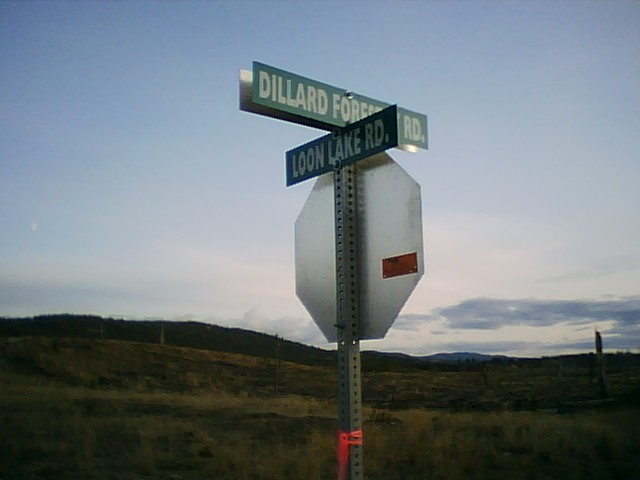 The nearest neighbours to Monkey Valley are 30 KM (20 miles) away, in the hamlet of Aspen Grove. This community was once a stop on the Merritt-Princeton stagecoach line! There are also some neighbours in another community, a similar distance by road, at the south-east end of Missezula Lake. Given how remote—and hard to stumble upon—Monkey Valley is, people often ask how I found this place. It was one of those rare moments of unexpected disclosure. I’d gone one September Saturday afternoon to look at a 10-acre piece of land with a partially finished house on it, north-west of Merritt. I felt uncomfortable with the situation of the land because neighbours overlooked parts of it. Normally I wouldn’t have said anything except that I wasn’t interested in the property. But for some reason, I said what I really thought: “It’s not private enough.”
The nearest neighbours to Monkey Valley are 30 KM (20 miles) away, in the hamlet of Aspen Grove. This community was once a stop on the Merritt-Princeton stagecoach line! There are also some neighbours in another community, a similar distance by road, at the south-east end of Missezula Lake. Given how remote—and hard to stumble upon—Monkey Valley is, people often ask how I found this place. It was one of those rare moments of unexpected disclosure. I’d gone one September Saturday afternoon to look at a 10-acre piece of land with a partially finished house on it, north-west of Merritt. I felt uncomfortable with the situation of the land because neighbours overlooked parts of it. Normally I wouldn’t have said anything except that I wasn’t interested in the property. But for some reason, I said what I really thought: “It’s not private enough.”
I later learned the realtor liked my curly hair, which might have accounted for why he told me about a property that was coming onto the market soon—160 acres, with a partially finished house and barn. He didn’t have time to show it to me that day, because it was an hour’s drive on the other side of Merritt, but he took me back to his office and showed me some pictures.
They weren’t that spectacular—just a bunch of trees, and a log cabin with an overturned chair beside it. I said I’d think about it, and drove back to Vancouver. I didn’t know what the land felt like, but I was very attracted to the fact that it was 160 acres and surrounded by crown land. It seemed like it would have complete privacy. I told my boyfriend about the place, and he thought it would be good for his ex-wife’s parents. That clinched it for me—I wanted it for myself, not for Hugh’s ex-wife’s family!
I called the realtor the next day, and said I wanted the property. He said I had to come and look at it first! So the following Saturday I went up to Merritt with my mom and my friend Bev, we met the realtor, and he drove us to the ranch. I was so taken with the seclusion, and with the beautiful yellow of the aspens on the winding country road we followed to get to the land. Little bushes all over the ground were red and orange. We found some late wild strawberries. My mom looked at the foundation of the house and said it was sound. And that was all it took! No building inspection, no appraisal… Just a conference with my advisors.
Me and Mom and Bev walked down the valley a little ways to talk about it privately. They were both very enthusiastic about the place. This encouraged me. I felt a peacefulness there, sitting on some rocks overlooking the creek, that seemed to be the answer to a longing in my heart. I had a vision of converting the barn into sleeping quarters and having writers’ retreats. I decided to go for it. We walked back to the house where the realtor was waiting on the porch, and I said I wanted to buy it.
The realtor helped me fill out the offer form, and advised me about the amount to offer. He felt the land was right for me and wanted me to have it, so helped keep the number of offers down by “losing” the key to the gate so that interested parties couldn’t come look at it. The property had been seized by the crown in a drug bust two years earlier, so a few weeks after making the offer Hugh and I met the realtor and presented the offer in the Kamloops court house. The offer was accepted, and the property was mine!
And the realtor, who I had dared to tell the truth to, proved to be a real ally in helping me get the place ready to live in over the next two years. I am very grateful to him. Read this post to see how Monkey Valley got its name.
This entry was first published September 17, 2008. I’ve made a few edits and moved it to the first page to help potential buyers know a bit of the history of the place.




















